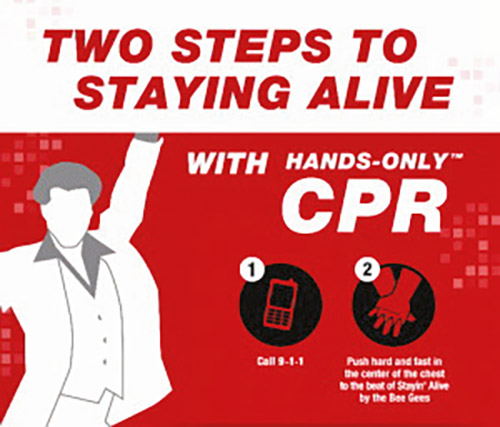

(Courtesy of SMGH) Picture this: You are walking up the steps of your shul, when a friend collapses, holding his chest. You rush to him, and he is out. You yell to somebody to call 911 and you sit holding your friend waiting for the ambulance. Sadly, your friend dies before the ambulance arrives.
Sound a bit far-fetched? Not really—this actually happened in the 1960s when Rabbi Hershel Weber saw a man die on the steps of his shul and he couldn’t do anything to help him. 911 emergency came too late to help this man. He wanted to do something to aid fellow Jews who were faced with the same situation. So, with the help of Izzy Fogel, z”l, he got an oxygen tank and some necessary supplies to help him offer this necessary service. And Hatzalah was born!
You are probably thinking that can’t happen today, as we have Hatzalah and better response. Well, think again—heart disease is the leading cause of death for men and women in the United States1 regardless of racial or ethnic groupings. One person dies every 36 seconds in the United States from cardiovascular disease—that’s 655,000 Americans, or one in every four deaths!2
“St. Mary’s General Hospital has special expertise as a State Designated Heart Center & STEMI Program, and can treat all patients,” said George Matyjewicz, PhD, community liaison. “However, even during those 90 seconds until Hatzalah comes (average time in Passaic-Clifton), the patient needs help. Remember you are the first first responder!”
Hands-Only CPR
When a person has a cardiac arrest, survival depends on immediately receiving CPR, which can double or triple the victim’s chance of survival! According to the American Heart Association (AHA), 90% of people who suffer out-of-hospital cardiac arrests do not survive, partially because most Americans (70%) feel helpless to act because they don’t know how to do CPR or are afraid of hurting the victim. It is incumbent on all of us to learn how to perform this vital skill for adults, children and infants. If the victim is not responding and is not breathing, and if you have an Automated External Defibrillator (AED), use it—the unit will talk you through how to use it. If two people are available to help, one should begin CPR immediately while the other calls your local emergency number and finds an AED!3 If you are alone, call Hatzalah or 911 and put your phone on speaker while you report the issue, and ask the dispatcher for help.
“If there is no pulse present, with an adult or teen, begin administering hands-only CPR,” said Matyjewicz. “It is important to apply pressure with both hands on the chest of the victim, right below the breasts4. And it should be on the skin, which means a shirt or blouse may be ripped open to apply CPR—tzniut or modesty is overridden to save a life! The pressing on the chest must be hard (2-2 ½”) and 100-120 beats per minute—in CPR training, songs are often used for the beats. The Bee Gees’ “Stayin’ Alive” or “Walk the Line” by Johnny Cash are the perfect songs for hitting the 100-120 beats per minute required for ideal chest compressions.
Mouth-to-mouth resuscitation, as you see in movies, can be dangerous if you have not been trained. It must be steady breathing as one normally does. If you blow too hard on the patient, the chest can blow open. For an infant, it needs to be mouth-to-mouth.
Chest compressions are good for the first few minutes someone is in cardiac arrest, pushing remaining oxygen through the body to keep vital organs alive. It buys time until someone with more skills can provide help. Badly administered CPR is still better than nothing. Do not be afraid to step in and perform hands-only CPR—your actions can only increase their chances of surviving!5 Remember, the principle of pikuach nefesh, of saving a life, takes precedence over virtually all other mitzvot. As it says in the Talmud: “Whoever saves a life, it is considered as if he saved an entire world.”6
Now that you have absorbed these life-saving thoughts, sign up for CPR training!
St. Mary’s General Hospital—nationally recognized, locally preferred—is among the top hospitals in America for health, quality and patient safety! The hospital has over 550 physicians and 1,200 employees, with every staff member committed to providing respectful, personalized, high-quality care—to satisfy patients’ needs and exceed their expectations. St. Mary’s General is a proud member of Prime Healthcare, which has won more Patient Safety Excellence Awards for five consecutive years (2016-2020) than any other health system in the country including a “Top 15 Healthcare System” by Truven Health Analytics. To learn more about St. Mary’s General Hospital visit https://www.smh-nj.com/ or Facebook at https://www.facebook.com/StMarysGeneral.
For more information, please contact George Matyjewicz, PhD, community liaison at georgem@gapent.com
###
1 Centers for Disease Control and Prevention. Underlying Cause of Death, 1999–2018. CDC WONDER Online Database. Atlanta, GA: Centers for Disease Control and Prevention; 2018. Accessed March 12, 2020
2 Virani SS, Alonso A, Benjamin EJ, Bittencourt MS, Callaway CW, Carson AP, et al. Heart disease and stroke statistics—2020 update: a report from the American Heart Associationexternal icon. Circulation. 2020;141(9):e139–e596.
3 Same as 3
4 AHA video available here: https://www.procpr.org/blog/training/hands-only-cpr-explained
6 Sanhedrin 4:1 (22a)









